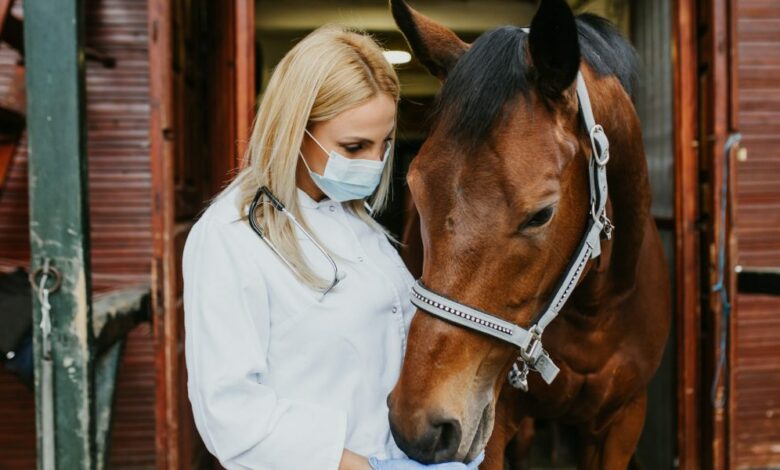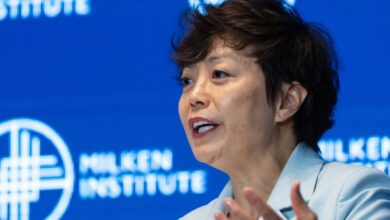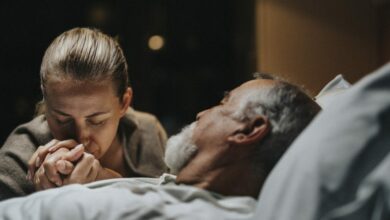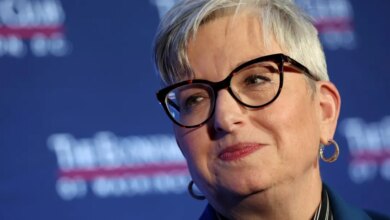Meet the 55-year-old veterinarian who walked away from a 6-figure salary in the prime of her career because corporate ownership drove her to the nonprofit world


Alicia Bye hit a breaking point about 11 years ago. At age 43, she co-owned two animal clinics in Texas, but by age 44 she had moved to Washington state to work as a wildlife veterinarian at a nonprofit where she earns $50,000, less than half of what she used to make.
Her husband’s career prompted the move, she tells Fortune, but so did the concentration of corporate ownership in the industry she loves.
Bye is part of a shrinking population of veterinarians trained in treating large animals like cows, goats, horses, pigs, and other livestock that makes up the country’s food chain. Conversely, livestock numbers have increased alongside population growth for years. The result is potentially disastrous for the American food chain, with the risks of disease and sick animals making their way onto people’s plates.
“Veterinarians care for cattle, they care for poultry, that’s where food comes from,” Bye said. “If you don’t have people who understand how to treat those species, that’s going to have grave impacts and not just on clients and pet animals.”
A corporate clinic can attract veterinarians to profitable areas with better pay and flexible working hours, but Bye is concerned about the less profitable, suburban and rural regions of the country these vets are moving away from–and the food-chain animals they are leaving behind.
The chaotic result means many vets, who already struggle with sky high student debt and low pay (especially in suburban and rural areas), are not able to care for rural animals and pay their own bills–an experience Bye is now quite familiar with. She realized how little attention food animals get, and now spends a few weeks at a time living in Texas working part-time with a classmate she graduated with, whose workload at his single-vet, large-animal hospital in Texas was busier than a beehive.
The food chain and infectious disease
Food-animal vets ensure that food-chain animals are safe to consume. They “serve on the frontlines for infectious disease surveillance,” contributing to national and global health security, according to a report by Johns Hopkins University. Yet the profession has seen its labor force plummet while the number of herds of their four-legged clients have soared. The U.S. produces more veal and beef than anywhere else in the world, with over 12,000 metric tons last year, along with other animal products.
Yet the number of large-animal vets has decreased 90% since the 1940s, and today just 2% of veterinarians exclusively work with livestock. According to the U.S. Department of Agriculture, 46 states have at least one rural area with a shortage of livestock vets.
Part of the problem is that large corporations and investment firms are increasingly turning a field traditionally known for mom-and-pop, independent owners into big businesses. Now, you can expect 75% of all specialty and emergency animal clinics to have a corporate owner, according to animal health firm Brakke Consulting. The firms are capitalizing on an important crisis vets face, namely poor pay and high student debt, which forces them to seek out better paid jobs that corporate industries can afford. But corporations, which keep their eyes on profitability, often set up shop in busier cities or towns, which is drawing veterinarians away from the more rural areas they’re needed in.
For vets, who face average student debts of over $188,000, the lure of better pay is strong. They can earn more at a private practice, too. According to the American Veterinary Medical Association, in 2022 a private practice veterinarian earned an average salary of $114,000, compared to an independent practice salary of $87,000.
A study that measured the impact of corporatization on independent veterinary practices found that a corporate practice could generate almost twice the revenue of an independent, rural practice of the same magnitude, and that the profitability of the model is “a major entry deterrence for rural veterinarians.” It also found that after a corporate practice emerges in an area, the employment and revenue rates of independent rural practices both decrease by about 3%.
“We could both work 12-hour days every day:” The chaos of a rural animal clinic
Studies state that the rise of corporate ownership “puts a disproportionate amount of strain,” on the remaining veterinarians’ workload–a situation that Bye, a part-time rural vet, describes as “beyond busy.”
Now age 55, Bye is in a better position than many veterinarians: she’s paid off her student debt, car loans, and has a place to live in both states she works in. She returns to Texas every few weeks to work a few days at a semi-rural animal hospital near Brenham that has only one vet, a prior classmate of hers, at the helm.
Ten days ago, she arrived to work at the clinic and saw a truckload of unannounced animal drop-offs (two were emergencies and five were large animals, like horses and cows). There were five animal surgeries scheduled within an hour and a half, and without her, there was only one vet to handle it all.
“Then a horse comes in with a huge puncture wound under its arm, and while we’re talking about the horse, a farmer comes in with a cow that can’t give birth,” she said. “We could both work 12-hour days every day, that’s how much need is there. And that’s just a normal day.”
The clinic, she said, is often booked out three weeks in advance and serves about a 30-mile radius of people who seek medical attention for their dogs, cats, and farm animals, like horses, chickens, goats, cows and calves. Her reason for returning to the frenzy of the clinic is simple: “I know how desperate they are, and there are very few clinicians now that are trained to work with large animals.”
She plans to return to Texas for good once her son finishes school because she understands that small, independent clinics that don’t generate as much revenue as corporate-owned clinics are in trouble.
It’s not the first time food-animal vets have called for more support. About a decade after Bye graduated from vet school as part of Texas A&M’s class of 1999, she described getting a lot of “desperate emails” from the U.S. Department of Agriculture, proclaiming a big need for people to work in slaughter plants and farms. Next came messages from the Food and Drug Administration.
People trained in large-animal care, like Bye, were in great demand–but they were offered poor compensation compared to the more lucrative and profitable field of companion animals like dogs and cats, which is the field she began working in so she could afford to pay off her debt and rent.
The amount of money a person can bring home, Bye said, accounts for the “huge discrepancy between what skills are needed and what people are being trained for.”
Two government initiatives aimed at addressing the food-animal vet shortage includes the Veterinary Medicine Loan Repayment Program, which was established by Congress in 2003 and repays up to $75,000 of educational debt in exchange for three years of service in a shortage area. But it comes with a drawback: the payments are federally taxed, unlike similar programs for physicians, according to The Hill.
Proposed legislation, the Rural Veterinary Workforce Act, was introduced last summer to end the federal taxation, which now costs the U.S. Department of Agriculture an additional 39% for each loan repayment, the outlet reported.
Source link




